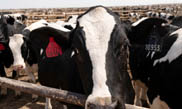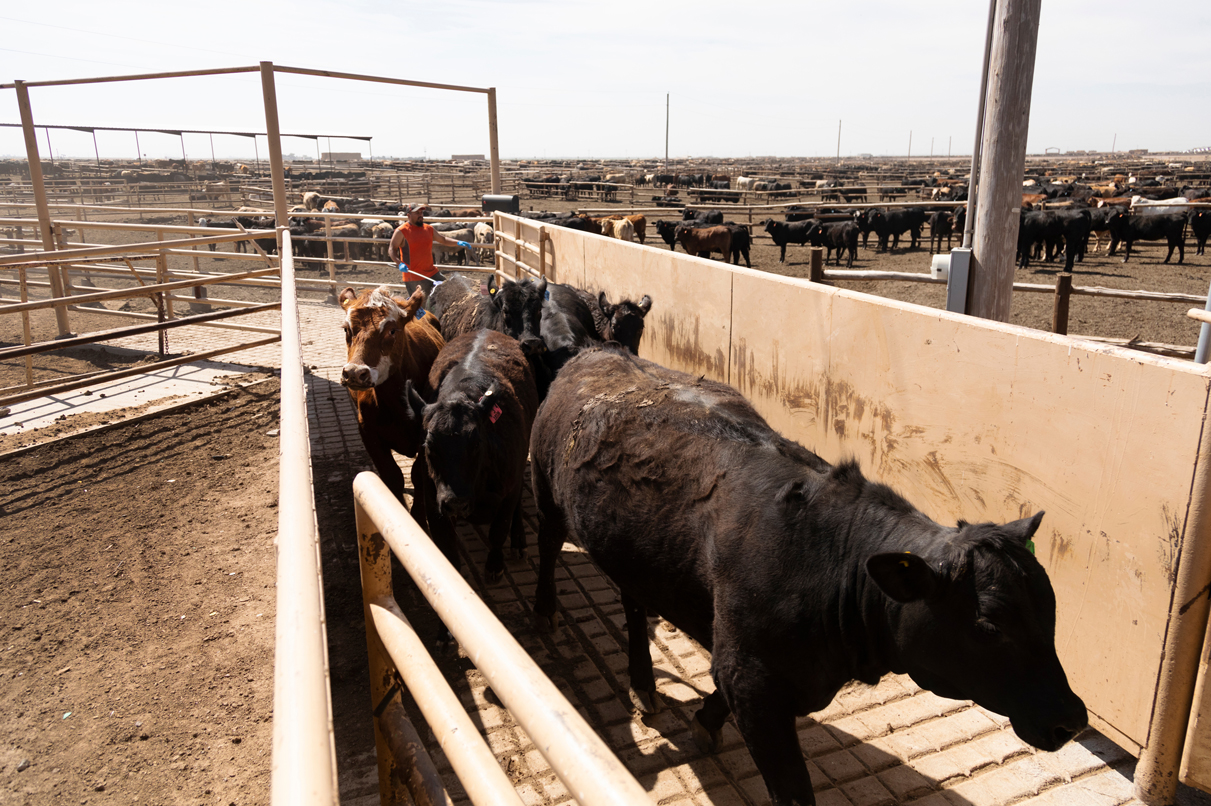Story at a glance
-
Innovation for Sustainable Production
Lorem ipsum dolor sit amet.
-
Prevention Rather Than Treatment
Lorem ipsum dolor sit amet.
-
‘Modern Livestock Farming’ In USA
Lorem ipsum dolor sit amet.
Chopsticks and smartphones are at the ready as each dish is set down at the hot pot restaurant in Chongqing, China. The fragrant smells that abound in this traditional establishment are dominated by the sweet scent of the traditional hot pot pork dish at the centre of the table.
“It’s the easiest way to cook the food,” says Yu Ping, President of the pork production empire Tianzow Food Company, of this traditional dish. “You add everything in and cook it … I think it's good for sinuses.” he adds.
It’s a feast for the eyes as well as the appetite – the display would satisfy any online social feed.
This collision of old and new, traditional and modern is everywhere here; at the nearby busy Yang Jia Ping market racks of ribs hang dramatically over the butchers’ stalls selling pork. It’s located just streets away from the towering skyscrapers in the financial district.
It’s part of China’s cultural charm which flows through the food on the table.
“Before, each farmer would raise their pigs for a couple of weeks – maybe just one or two. They’d just have enough for their own family’s consumptions. But now it's changed,” explains Yu Ping.
Having worked at his business for 30 years, Yu Ping has witnessed this revolution first-hand. The company, which includes Tianzow’s Breeding-Joint Venture, Tianzow Food Abattoir and Tianzow Wet Market, has grown to cover 16 provinces in China, to satisfy huge global demand.
Yu Ping wants to grow the business even further to cover the whole of the country – all 33 provinces of this vast, densely populated region.
This bold ambition would be little more than a pipe dream without the software employed at his breeding operation.
“Tien Sao’s philiosophy is that biosecurity is of number one importance. Without it we cannot have this high efficiency, lower cost safe products,” Yu Ping explains.
Prevention Rather Than Treatment
The bright flood lights and modern design at the breeding facility make a stark contrast to the soft lanterns of the restaurant.
Veterinarian Renna Zhang stares through a glass window onto the floor of the facility. Her eyes follow her team members as they inspect the pigs roaming across the pale green floors.
“We have been always adhering to the philosophy of prevention, rather than treatment,” she explains. “We prefer to focus on biosafety to keep our pig away from diseases.”
What does this mean in practice? She cannot step foot on her own facility floor without undergoing a strict quarantine period. This keeps her from accidentally introducing harmful bacteria or illness to the animals.
Although she created these rules herself, one may sense a twinge of regret. Dr Zhang has wanted to be a veterinarian and work with animals since she was a child.
But, as she outlines in a crisp, clinical manner, “the outbreak of any infectious disease on the pig farm may cause several hundred thousand renminbi or even higher loss.”
“So, for the purpose of avoiding big financial loss, we prefer to give more weight to prevention than to post-occurrence control.”
According to Dr Zhang, this means keeping a close eye on the animals, and China’s growth as a technological superpower has provided her the tools to do so.
“We use our own software to monitor the environment and production parameters of the farms every day,” she says with a gesture towards the facility floor.
“In addition, we create working groups on mobile apps to communicate the daily work of the farms. I also make field visits to the swine farms to do some clinical work, such as disease diagnosis.”
It’s a cost-effective, health-efficient system for a company that views prevention as a money-saving investment.
These efficiencies are not simply a story of boosting the bottom line; this tech is helping veterinarians and their teams to enhance the health and welfare of their animals too.
Staff at the breeding facility are able to treat any issues or signs of sickness within a few hours, thanks to a big data platform. They simply plug their observations into the platform, before it’s picked up by the veterinary team, who advise the workers on how to treat the animal.
The transformative effect of technology is being felt more than 7,000 miles away, in US cattle ranches, too.
‘Modern Livestock Farming’ In USA
Cattle Empire is the fifth largest feeding operation in the US, housing thousands of animals. Much like in China, the operation is continually seeking bleeding-edge tools for monitoring herd health.
As the workers – still known as cowboys – explain this is ‘modern livestock farming.’ Smart, precise, and predictive.
The ranch is located in Kansas. In the time of the Wild West towns located in the state were once known as ‘cow-towns’, because they were the destinations for cattle to be sold at market. But technology has tamed the industry by holding the reins of efficiency on many of the resources needed to feed, water and take care of the animals.
“We employ a lot of technology to make sure we're efficiently taking care of cattle,” she explains.
“Because it's impossible for me to gain a lot of knowledge just from looking at the animals every day. It helps me to put it into numbers.”
For Dr Barnhardt, the data tells a story about the most efficient way to care for the herd.
“I will pay very close attention to the percentages of the animals that are needing treatment in a pen and then look at the percentages of animals that may succumb to disease,” she explains.
“If we have a high treatment rate in a pen, I will try to focus my team's efforts on that particular pen because I can see a problem coming. If we need to re-vaccinate or re-evaluate some of our vaccination protocols, we might do that.”
Dr Barnhardt’s approach looks set to become the norm. This kind of tech-assisted expertise is increasingly employed across farms in the US, EU and parts of Asia where new tech complements traditional husbandry. Some farms have even begun using tracking systems which monitor the every move of each animal using tagging systems.
These systems are able to record how much an individual animal has eaten and at what time, how much they weigh and any changes in behaviour that might point to poor health.
It’s a model for growth, enabling greater efficiencies across an industry that’s striving to become more sustainable.
“We get new technologies, new vaccinations, new protocols that we can follow and employ at the cattle feeding operations,” says Dr Barnhardt.
“These help make our animals healthier, grow faster and use less resources. It's part of a big picture of the beef industry in the United States.
“I'm really proud to be a part of that culture and that industry, supplying people in the United States and across the world with protein,” she adds.
And this point is critical as the world faces a predicted 30 per cent rise in the global population by 2050. In many sectors, the growth of technology can be regarded negatively, but within the food producing industry it will help to keep us alive and well nourished for years to come.
Spotlight: Welfare as part of the technology equation
Welfare has an important place in the improved technology and sustainability story.
In Canada, pork production is of significant economic importance. At the Arco Swine Research station in Ontario scientists are making advancements in welfare using feed technology.
Researcher Lee-Anne Huber explains: “Animal welfare is very important in what we do.
“It ensures that the animals are healthy, comfortable, and feeling well. They will then perform better and produce a better quality product for us at the end of the day.”
In fact, the research team are trialling precision management systems, such as electronic feeders for sows using electronic RFID tags to track and feed each animal the exact nutrients it needs.
“I think by developing newer technology, we improve efficiency,” Lee-Anne.
“As a nutritionist and farm technology researcher myself – if we could actually increase current feed conversion efficiency by 10 or 15 per cent, that's large-scale. [We could] reduce nitrogen excretion, reduce the greenhouse gas emission, and actually produce more pork.”
Case studies, such as this one, demonstrate just how enthusiastically the agricultural industry is embracing the sustainability revolution.
Farming to feed a growing world
Next storyOther stories
- A Lifetime of Mutual Care
- Health, Husbandry and Heritage
- Pride in Profession
- From Lab to Land
- The Long Walk towards Rabies Eradication
- Healthy Animals Drive Economic Growth
- Responsible use: the responsibility of us all
- Innovation for Sustainable Production
- Farming to feed a growing world
- Protecting Animals Protects People












